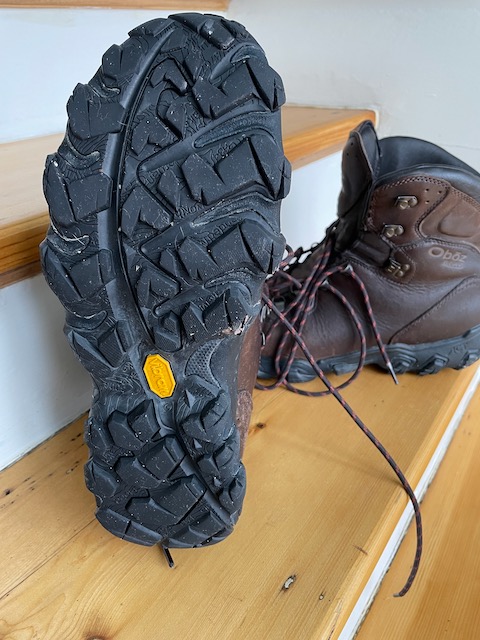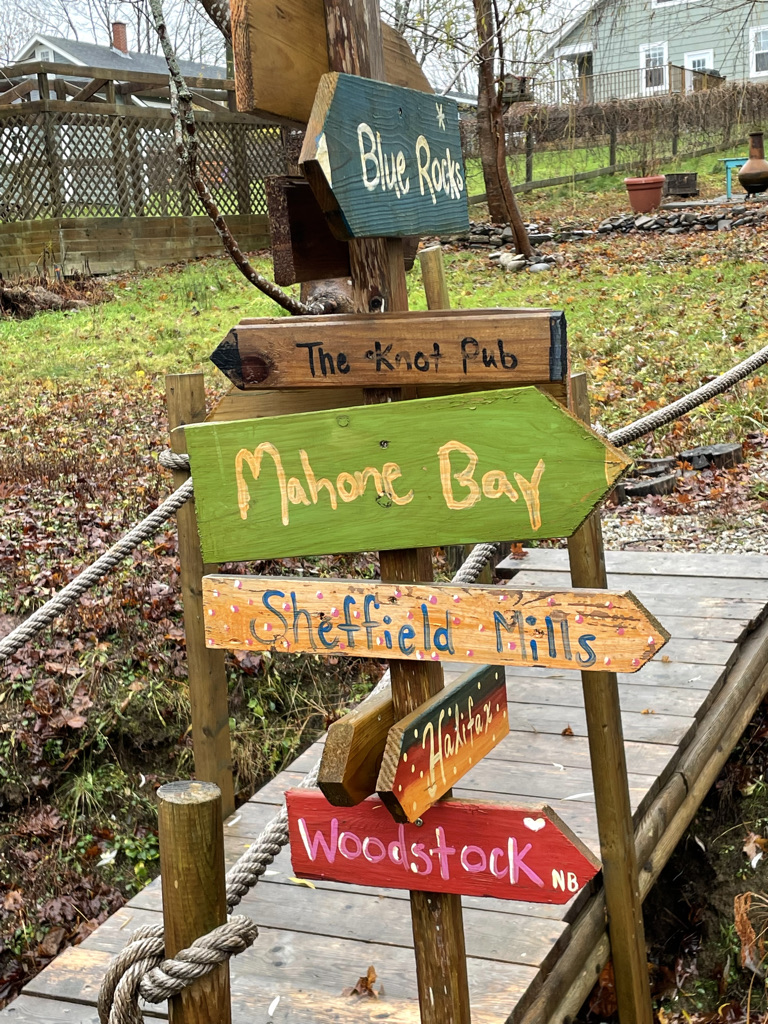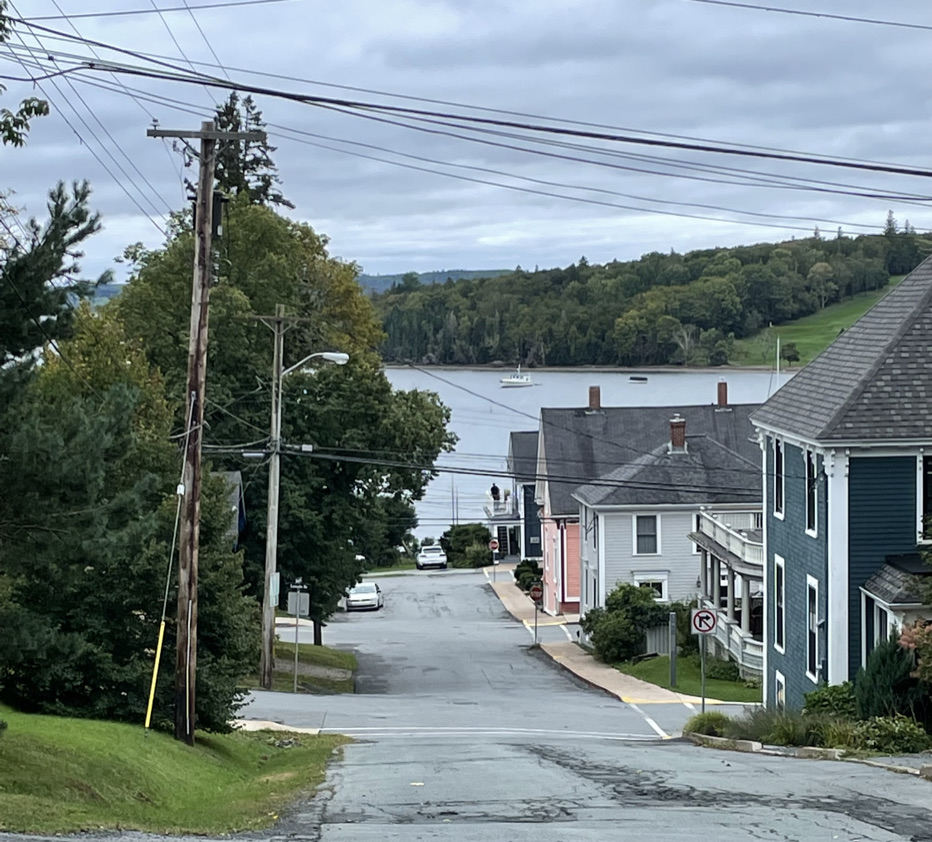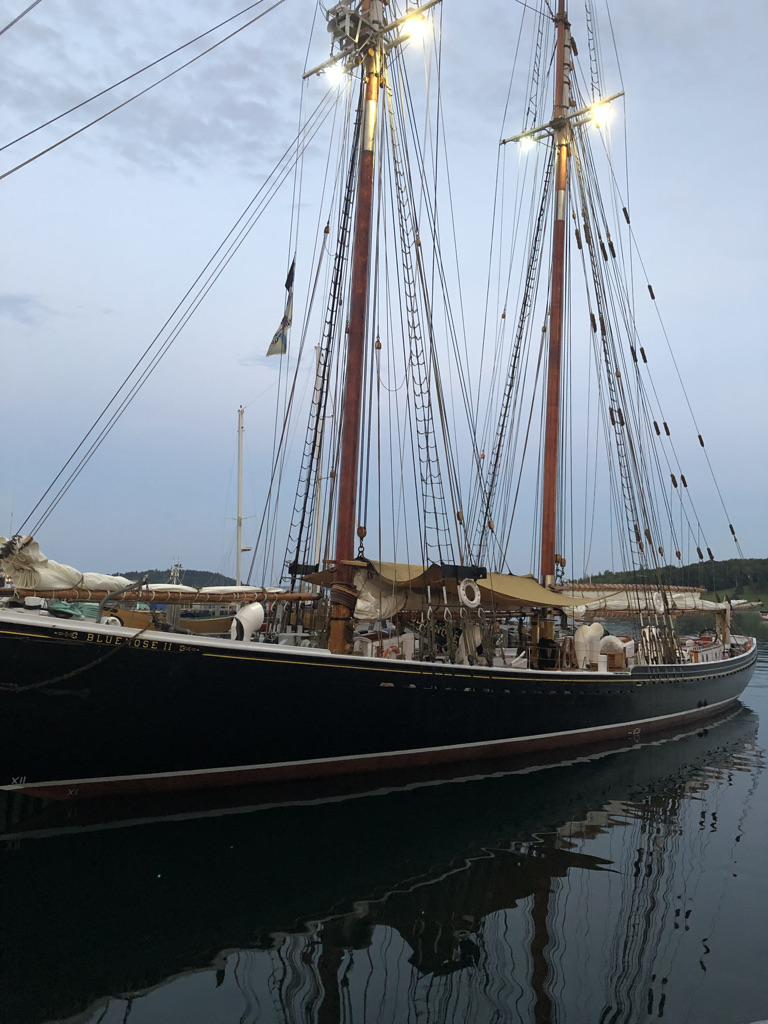Part of a series on my favourite walking routes in the Maritimes.
Blog posts are a labour of love for me, and yet there is a cost to running this site and organizing my walks. If you’d like to help with that, I’d really appreciate something for my tip jar. The Buy Me a Coffee service allows patrons like you to fund writers like me. If that sounds like a worthy idea to you, then go ahead – keep buying me coffees. Thank You Very Much to everyone who has contributed already!
*****
Please note that some of the amenities, parks, or services listed below may have limited hours depending on time of day and the seasons. Check the links included below for up to date information on what’s open and what’s not during your walk.

The Lunenburg Loop is a great way to explore the area around the town, gulp down that fresh Atlantic air, and get some great views of the harbour.
Length: About 7.5 km, depending on diversions.
Surface: Paved sidewalks and firm gravel trail
Public Transit: none
Route:
I’ve started the route by the waterfront, at the bottom of the stairs/ramp down from Duke Street where it joins Bluenose Drive. The harbour is in front of you and the red-coloured Fisheries Museum of the Atlantic is on your right.
To start, turn towards the museum and walk west on Bluenose Drive, towards the west end of the harbour. After about 100m you’ll pass a public washroom – good place for a pit stop!
At the corner of Bluenose Drive and Montague, turn left and follow the gravel path to enter the little park – this is the Harbour Walk path. Follow this west past the end of the harbour, and up the wee lane to join Falkland Street. Cross Falkland here at the cross walk, and then turn right. Walk along Falkland past the Bluenose Lodge inn, heading for the cross walk at Dufferin Street. You’ll see the Knot Pub right in front of you on the other side of the street. After crossing Dufferin, turn left (unless the pub beckons) and walk about 20 m, then bear right into the car park of the old railway station. The Back Harbour trail starts here – it follows the route of the old rail line that once carried fish and freight to and from Halifax.
Proceed northwest along the Trail till you come to a fork in the path – bear right to stay on the Back Harbour Trail (left takes you onto the connector to the Rum Runner trail to walk to Mahone Bay, a lovely 10km walk in itself).
Follow the Back Harbour trail through the woods and then some open spaces.

After about 1km you’ll come to the cross walk over Starr Street. Pick up the trail on the other side, and continue along, taking in the views of the back harbour and its fishing boats and leisure craft. After about 1.5 km, you’ll come to Sawpit Road – use the cross walk and pick up the path again on the other side. Follow the trail through the light woods and shrubs, past frog ponds and fields, until you come to the road crossing over Blue Rocks Road. The trail continues, on a diagonal line on the other side of the road – rejoin the Trail and follow it for another 200-300 m or so till it ends at Battery Point Road.
Turn right down Battery Point Road for a wee bit. At the intersection of Hospital Road, you can turn right, climb the hill for about 30 m, and take the left dirt lane by the post boxes. This dirt lane is the old Shore Road. Follow it up the hill, squeezing past the gate at the top (don’t worry, you’re fine). Follow the old Shore Road, up the hill and then bearing to the right, as you climb up along the ridge behind the fish factory. You’ll emerge at a little clearing with a new path in front of you that continues gently up the hill following the old route of the Shore Road.
Alternatively, instead of turning up Hospital Road off of Battery Point Road, you can keep going down Battery Point road towards the fish plant. The road ends at the car park for the fish factory – turn right and cut across the car park towards the harbour and the old warehouses and docks. At the end of the car park there’s a dirt road climbing up towards the right – at the top you’ll the see the little clearing and a path on your left – follow this to join the old Shore Road towards town. Going this way across the car park can be a bit better in winter if there’s ice around.
The old Shore Road path offers lovely views south and west of the harbour on your left and there are some great lookout points. There is also a wonderful spot with a bench where you can have a rest.

After a few hundred meters, the footpath ends at a traffic barrier and here you rejoin the current paved stretch of the Shore Road. Follow it west and down hill to the intersection with Pelham Street. Bear left and follow Pelham west for several hundred meters, to Shipyard Hill Road. Turn left and go downhill to join Montague Street, bearing right (west) here. Follow Montague for several hundred meters to the corner where it’s joined by Bluenose Drive. Turn left and follow the road down a slight hill and then right (west) along Bluenose Drive, to finish where you started by the Fishery Museum.

Parts of this walk are pretty exposed, so keep an eye on the weather and dress appropriately – the summer sun can be stronger than you think, and the winter winds off the harbour can freeze your eyeballs. The walking surfaces are usually fine, just be careful of ice in winter. There can be some muddy stretches just after a heavy rain, but other than that, for the most part you can walk this route in running shoes or light trail shoes most of the year.
Sights:
I love this walk because of the varied sights – the history of the town on display in the views of the harbour front, the historic buildings like the Bluenose Academy (today, housing the Lunenburg Academy of Music Performance as well as the town library), the working life of the town seen in the fishing boats,

and the wildlife that lives along the trail. I’ve seen deer many times,

along with ospreys, herons, finches, ducks, geese, frogs, salamanders, snakes, turtles, mice, foxes, racoons, squirrels, and chipmunks. Stretches of the trail take you through a gorgeous tunnel formed by the arched branches of birch trees, and beside little ponds. The harbour views along Shore Road are some of the best you’ll get. And the houses tucked along Falkland, Pelham, and the Shore Road are a big part of Lunenburg’s Unesco Heritage designation.
One of the attractions of this route, for me, is that the sights change with the seasons. The spring brings chirping frogs and toads, crocuses and wildflowers, budding trees and greening grass. Summer is cool shade and warm breezes. Autumn is an explosion of colour. And winter is snow clinging to branches and ice in the harbour, tinged with the scent of wood smoke.
Food & Refreshment:
There are many options for refreshment at the start and end of the trail, near the harbourfront, ranging from ice cream to light snacks for full dinners. I live here – they’re all good! That said, I would be remiss in not mentioning our neighbours, John and Samera, who own J3 Pizza on Montague Street. And of course, the restaurant group that includes the South Shore Fish Shack, Half Shell Oyster Bar, the Salt Shaker Deli, the Beach Pea Kitchen and Bar, and the Bar Salvador (all along Montague Street), are favourites in part because our house used to be a restaurant where Martin and Sylvie started out.
I also can’t omit the Grand Banker, the Old Fish Factory, and the Shipwright Brewery along Montague, and the Dockside restaurant, the Ice Cream shop, the Savvy Sailor cafe, the No. 9 coffee bar, and Rascal’s Run Burrito Bar – all also along Montague Street. Plus there’s the Smoke Pit BBQ shack on Bluenose Drive, and more places up on Lincoln Street, including Lincoln Street Food, the Laughing Whale coffee roastery and cafe, the Moontown Market cafe, and the Lamprai and Spice Sri Lankan takeout. For a small town, we’re packed with options for refreshment.
And there’s more! Beyond all those yummy options, you might also want to pop into Foodland on Montague to grab picnic supplies and snacks. There’s also the Subway sandwich shop on Montague, and the Burger King on Falkland. And don’t forget about the Knot Pub, which does great food plus local beverages. On the other side of the harbour from the Fishery Museum, off Tannery Road, there’s the Lightship Brewery Pub along with the Barn coffee spot. Plus, just outside of the old town on the Bridgewater road, there’s Alex’s Chill and Grill for burgers and fish and chips, the Independent grocery store, the local Nova Scotia Liquor Commission store, and the local Tim Hortons. Spoiled for choice, we are.
There are public washrooms located along Bluenose Drive, at the west end near the start of the Harbour Walk trail, and at the east end by the Zwicker wharf. In summer, there is usually a portaloo located near the Back Harbour Trail where it crosses Starr Street.
There are park benches and picnic tables at several spots along the Back Harbour Trail, so why not bring some refreshments and enjoy the views while you have a rest. Please remember to take all your garbage and waste with you – you’ll find bins at several spots around town and by the trail access points where you can dispose of it.
Finally, there are water fountains located near the public washrooms. Take some water, because there are no fountains along the Back Harbour Trail itself.
Diversions:
This route can easily be extended or shortened, as desired.
To extend it,
at the start of the walk, as you cross Falkland Street before turning towards the Knot pub, keep going straight up Broad Street. This will take you through what’s known as New Town, up the hill towards the Hospital. It makes a nice comparison to the houses you’ll see later along the route in the Old Town. If you continue all the way up Broad to High Street at the front of the hospital, turn right and follow High Street to Dufferin. Turn right on Dufferin and continue down the hill following the street, and you’ll come to the start of the Back Harbour Trail by the Knot Pub. This will add about 2 km to the walk.
To shorten it, you can jump off the Back Harbour Trail at several points – after about 1km where the trail crosses Kissing Bridge Road – turn right here onto Starr Street and follow that south back to Lincoln Street; or at Hopson Street (follow that south up and over the hill and back down, to rejoin Pelham); or at Sawpit Road (follow that south up and over the hill and back down to rejoin Pelham)
Also, if you follow the full route as described, then you’ll notice that beside Battery Point Road, there is a small trail leading off to the east – this is the entrance to the Salt Marsh lookout.

Follow this trail for about 100m and you’ll come to a shaded platform that offers great views out over the salt marshes and the many birds that make it their home. It’s a peaceful, cool spot for a picnic too. To rejoin the route, follow the trail back to Battery Point Road.

At Sawpit Road, where the trail crosses, you can turn left and follow the road north down the hill. Cross the highway here (no cross walk so use caution) and follow the road down the hill to walk down to Sawpit Wharf. There’s a bench on the end of the wharf which makes a great rest spot where you can look out over the back harbour. To rejoin the route, simply follow Sawpit Road back up the hill to the Trail crossing.

Another option is at Starr Street, where the Back Harbour Trail crosses it – you can exit the trail here and bear right to go up Kissing Bridge Road. You’ll be walking uphill with the Hilltop Cemetery on your right. About halfway up the hill, you can follow a lane into the cemetery and wander through it up towards the Academy – a lovely way to view the building. To rejoin the route, follow the cemetery paths back to Kissing Bridge Road, down the high to where the Trail crosses it.
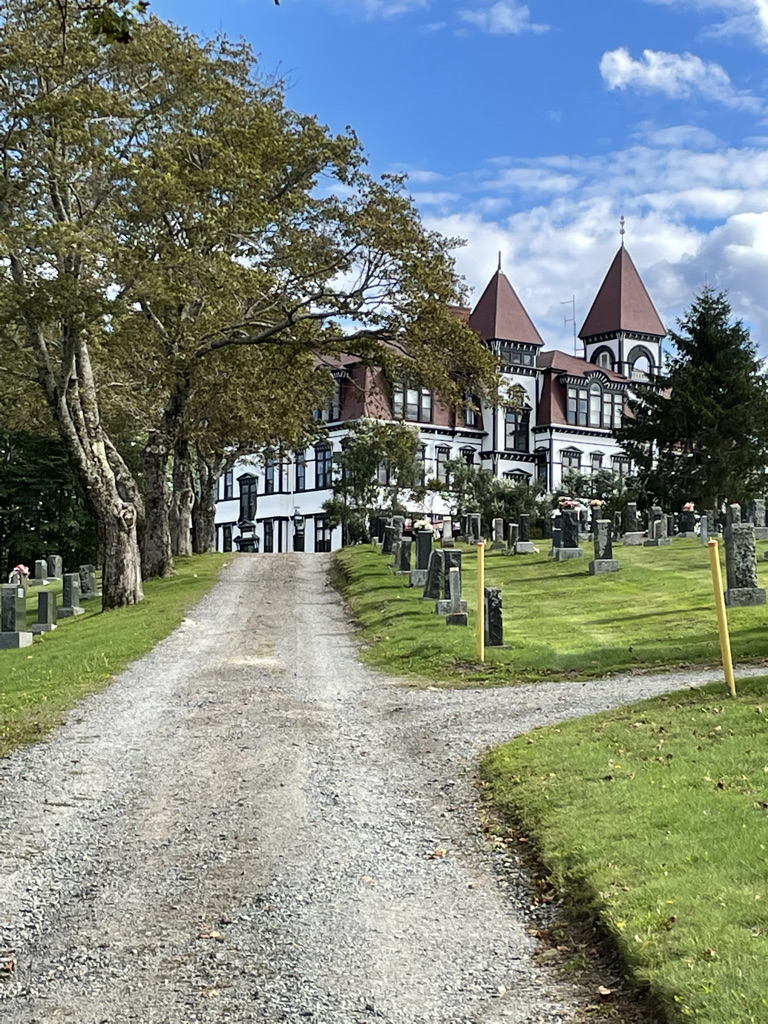
Enjoy exploring Lunenburg.
If you feel like supporting my blog, you can buy me a coffee.



